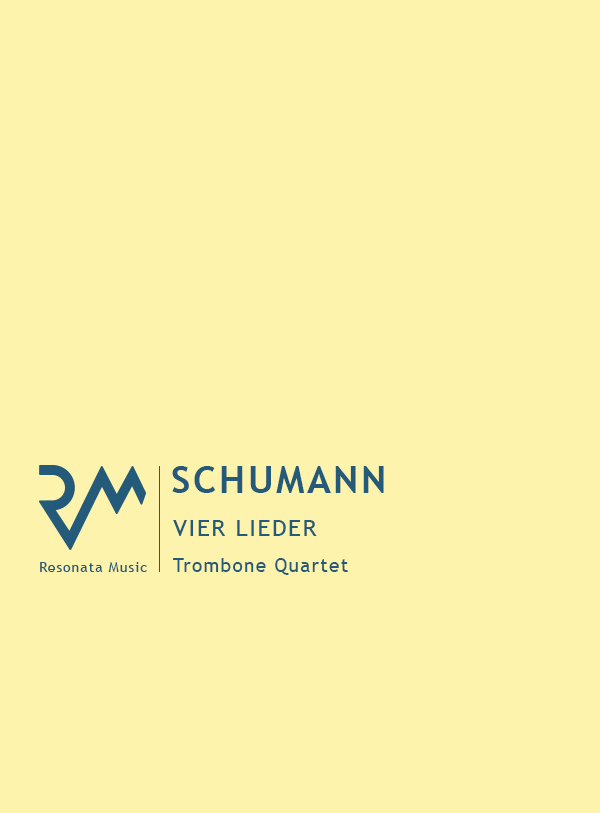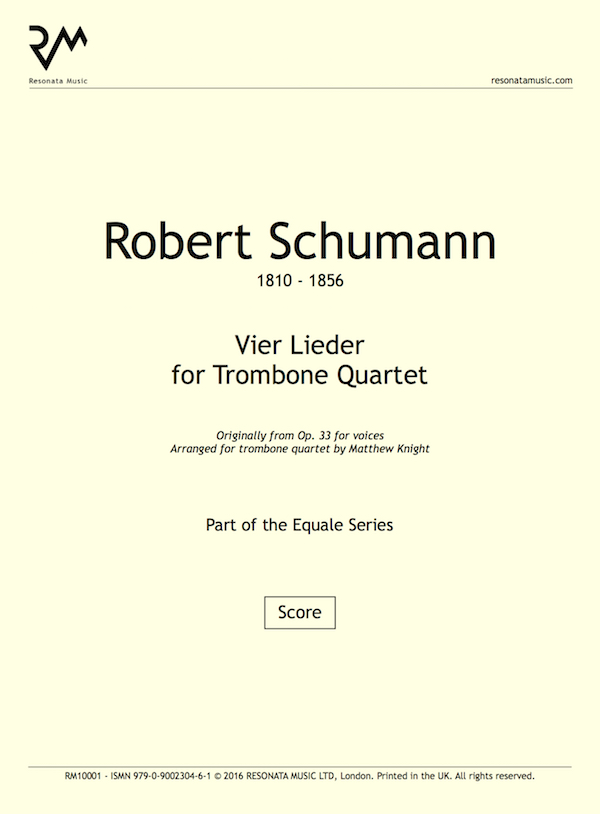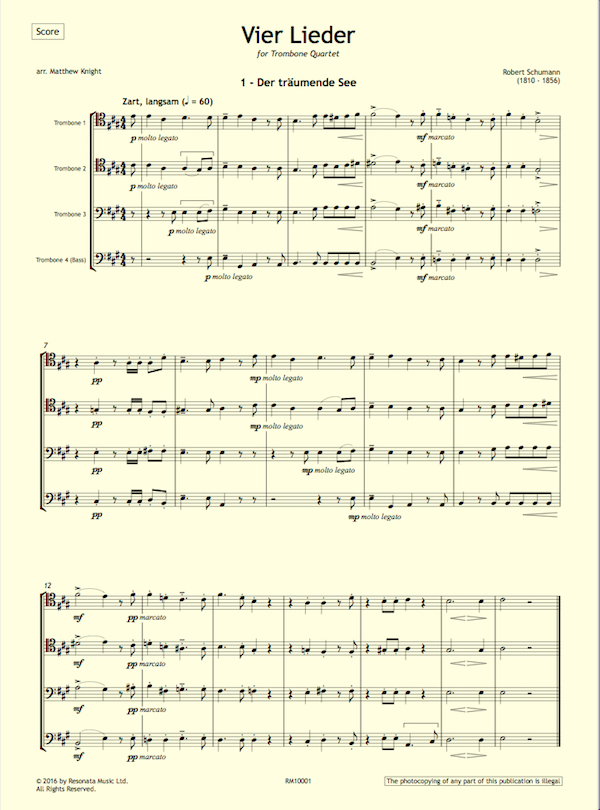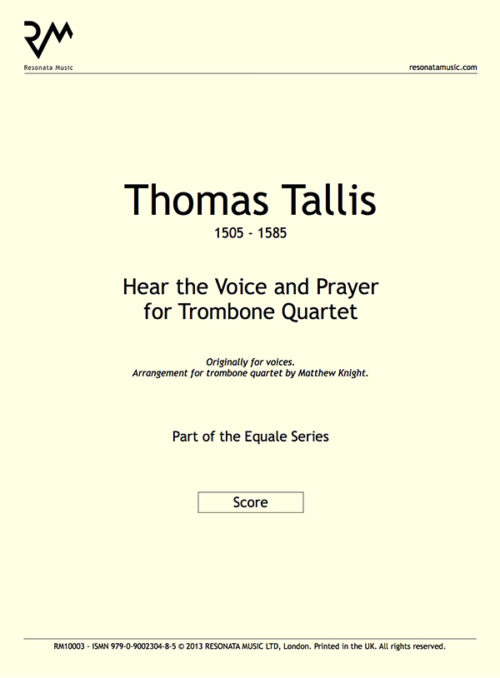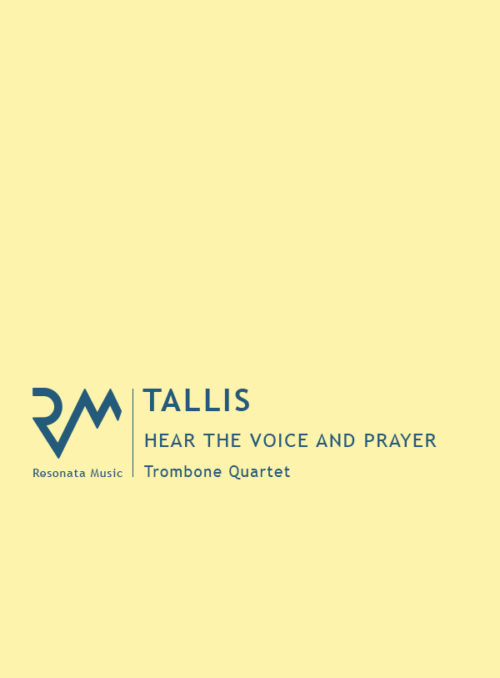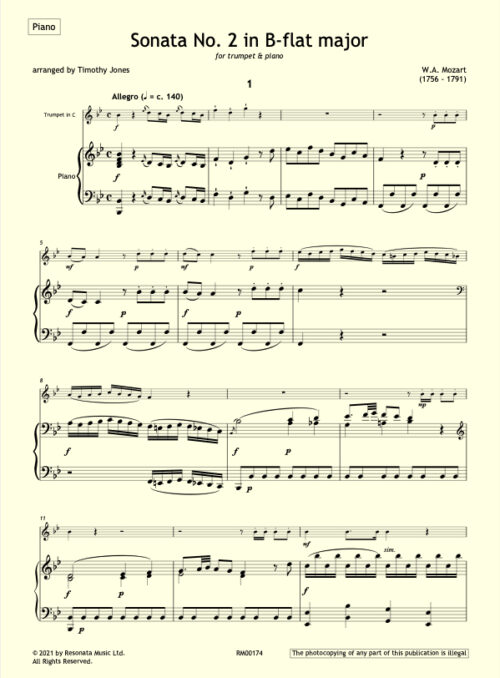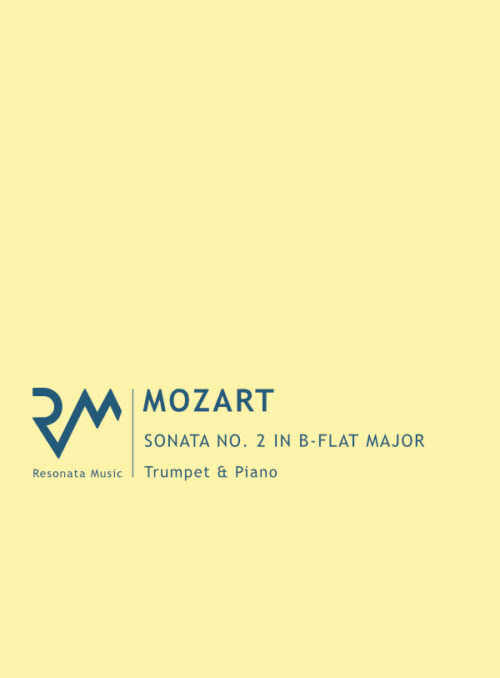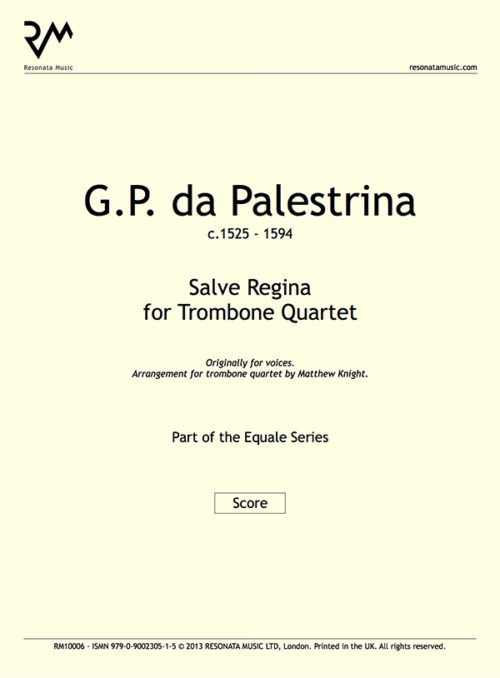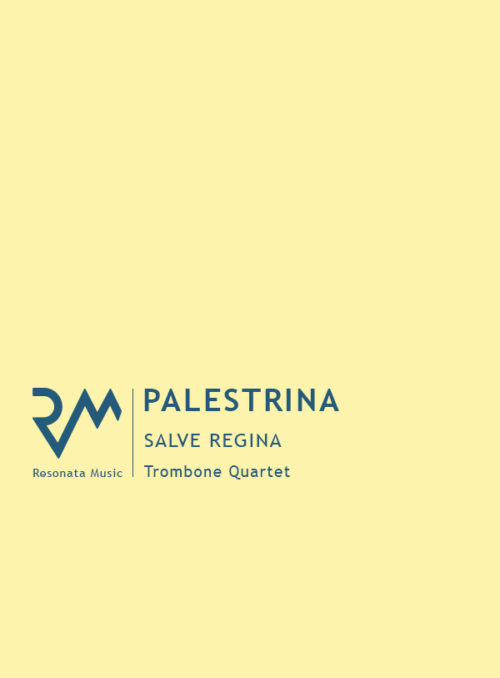Description
1840 is often referred to as Schumann’s Liederjahr (“year of song”): having written almost exclusively for the piano in the previous decade, he composed 168 songs in that year alone. After a lengthy courtship Schumann finally married Clara Wieck in 1840, in a union opposed by her father, and perhaps this event led to his enormous outpouring in song. Whilst the most famous sets are for solo voice and piano, the Op. 33 Sechs Lieder are for four-part male chorus, making them perfect in range and number of parts for trombone quartet.
These part-songs were composed in February 1840, and Schumann wrote to Clara on February 22nd, “since yesterday morning I have written about 24 pieces of music”. It’s perhaps no surprise then that the first song, a setting of a text by Julius Mosen, Der träumende See (The Dreaming Lake), is not very substantial, really only consisting of two identical eight-bar phrases. As the set progresses, however, the songs grow in stature. No. 2, Die Minnesänger (The Minstrel), is a hearty rondo-form (A-B-A-C-A-coda) setting of Heine’s text which asserts that the “word is mightier than the sword”. A complete contrast follows in No. 3, Die Lotosblume (The Lotus Flower), another Heine text. The lotus flower waits for nightfall to bloom: “the moon…awakens her with his glance”, and the key changes in b. 13 from a warm D-flat major to the brighter mediant E major. The final song, Frülingsglocken (Bells of Spring, a text by Robert Reinick), is the longest of the set, and features three periods of spring: Schneeglöcken (snow bells) ring in the first day of spring; Maiglöckchen (May bells), represent the wedding of Spring to Earth; and Blauglöckchen (Blue bells) depict the funeral of Spring.
Parts included:
- Score
- Trombone 1
- Trombone 2
- Trombone 3
- Trombone 4 (Bass)
Purchasing this product entitles you to download it three times. You will receive an email with a link to download your files upon completing payment.

